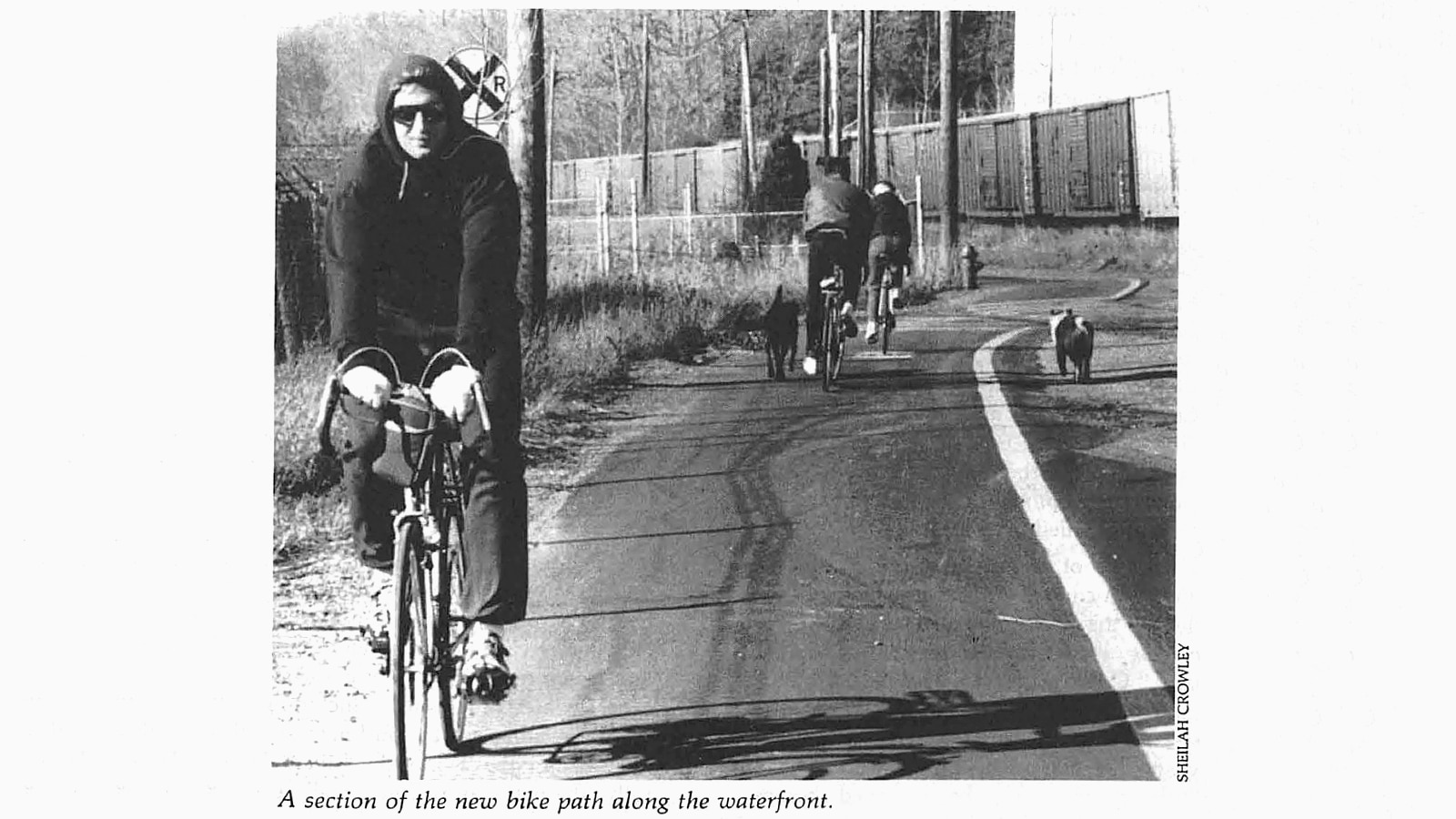In 1985, Mayor Sanders’ Office and CEDO began executing the Waterfront Development Plan.
The plan was to provide the people of Vermont with a clean and vibrant recreation area to enjoy panoramic views of beautiful Lake Champlain and to draw tourists to the region to bolster tourism and hospitality and improve the economy. The most popular feature of the newly revitalized Waterfront would be an eight-mile bike path stretching from Burlington to Winooski.
The Burlington waterfront had a vibrant history going back over 100 years but sadly fell into disrepair and became an environmental, ecological, and health hazard. It seemed the largest City in Vermont was at risk of going the same way as so many port towns in the country: polluted, dilapidated and dangerous.
“In the mid-1800s, Burlington was the third largest lumber port in the country. The 1800’s waterfront was an incredibly active and lively place and the economic driver of the City. Engravings from the period show a waterfront where every available space was used for lumber storage, rail siding, and other commercial activities. To support these activities, the shoreline of the Burlington waterfront (once a long, sandy crescent) was repeatedly filled and expanded: a process that would go on into the 1950s. By the end of the 1980s, the filled lands of the waterfront had fallen into decay. Petroleum shipments by barge were being phased out, rail was in decline, and conditions of remaining equipment and buildings were poor.”[1]
The City of Burlington took action in the late 1980s, under the leadership of Mayor Bernie Sanders and CEDO Director Peter Clavelle, and used the Public Trust Doctrine in court as a means to reclaim the filled lands of the waterfront for public use.[1]
The CEDO website provides great detail on the revitalization project over the next few decades:
In 1988, the City constructed the Burlington Community Boathouse. At the time, it was the only actual waterside public access on the north Waterfront. In 1998 and 1999, the City placed a clean fill at what is now the Waterfront Dog Park. In 1999, the City removed 800 yards of macadam from under Lake Street, which was being rebuilt. In 1999 and 2000, the City focused on the so-called “Astroline Site,” a 3-acre site on the Urban Reserve, which was the main distribution point for petroleum.[1]
In 1988, Mayor Sanders recorded a CCTV community meeting with George Thabault and Michael Monte to discuss the many Burlington revitalization efforts and the challenges therein. One of the most significant goals associated with the redevelopment of the Waterfront and bike path was establishing a relationship with the Navy, who were housed at the foot of College Street in a facility draped in barbed wire, located next to the new community boathouse. A task force was assembled to ask the Navy to move to a site off the Waterfront, thereby freeing up a piece of land that could be enjoyed by the community and which the military readily acknowledged they did not use regularly.
The negotiations with the Navy ensured a win-win for all and not utilizing any taxpayer dollars, as Mayor Sanders’ team created a revenue-generating model of renting retail space to businesses, the funds which would pay off the bond. Ultimately, the Navy got something better than they had; the City would get the space for public recreational activities.[2]
“Essentially, I think most people know we have been working very hard to create a waterfront in downtown Burlington that can be enjoyed by all of our people; and we’re making real progress.The bike path should be completed this season, we’ve acquired more park land and the community boathouse.”[2]
 Back to Timeline
Back to Timeline





